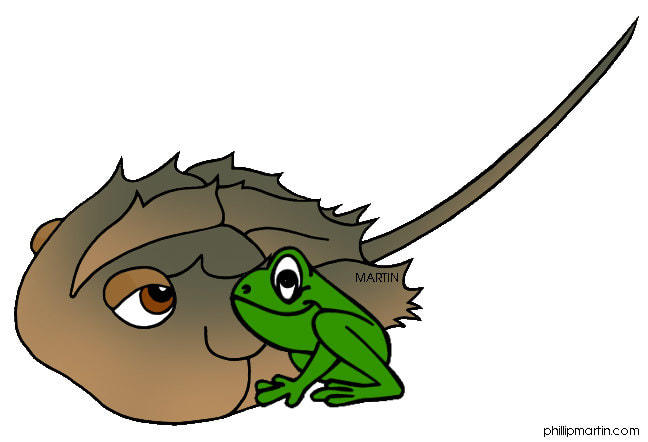Horseshoe crabs are often referred to as living fossils. They are primitive arthropods who have lived on earth for nearly 360 million years and remain largely unchanged from those ancient beginnings. The horseshoe crab's existence is, unfortunately, becoming threatened by human activities, included being harvested for medical research. Why? Because horseshoe crabs save lives! Anytime a foreign object or substance enters the human body, the body becomes a risk for infection. if you've ever had a vaccination, an intravenous treatment, a surgery of any kind, or a medical device implanted...then you owe your very survival to the humble horseshoe crab.
These crabs have copper-rich blood that is a sharp blue color. The horseshoe crab's blood contains proteins that are released in response to even the smallest amount of bacterial endotoxin, like E. coli. The presence of bacteria causes the horseshoe crab's blood to gel, or clot,. This is part of his hypersensitive immune response system. In the 1960's, two researchers (F. Bang and J. Levin) developed a method of using these coagulation factors to test for contamination of medical devices. By the 1970's their LAL (Limulus amebocyte lysate) test was being used commercially to make sure that everything from scalpels to artificial hips were safe for introduction in the human body. And although this testing was crucial for safe medical treatments, it is taking a big toll on the horseshoe crab population. With their blood being in high demand, the medical industry alone catches as many as 500,000 crabs each year. The crabs aren't killed outright but caught, bled, then released back into the water. Scientists suspect, though, that many of these released crabs are surviving. The International Union on the Conservation of Nature and Natural Resources lists the Atlantic horseshoe crab as vulnerable; one step below endangered on the extinction risk scale. There is some good news though. management practices are now in place that will hopefully protect the species.
Now here's a question for all you zoologists out there. Is a horseshoe crab really a crab? The answer is no, not really. Horseshoe crabs are marine arthropods but they aren't crustaceans. Actually the horseshoe crab is more closely related to spiders (yum!) and ticks, then they are to true crabs. They belong to the Chelicerata, along with arachnids. These arthropods all possess special appendages near their mouthparts, called chelicerae.
Horseshoe crabs use their chelicerae to put food in their mouth.
Now didn't I tell you this would be interesting?

 RSS Feed
RSS Feed